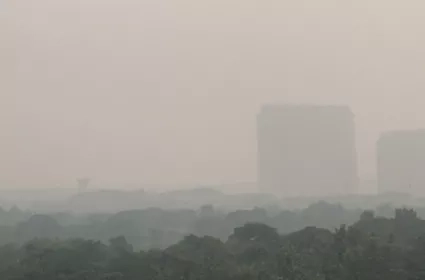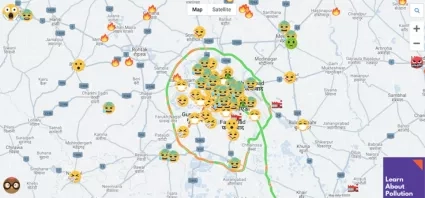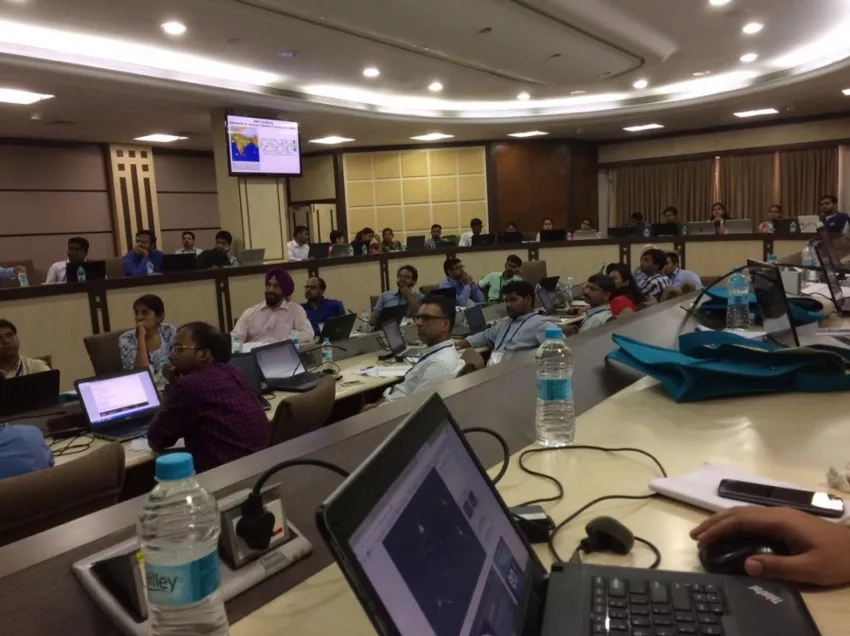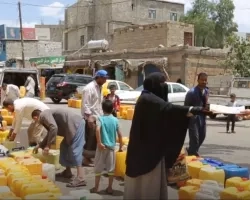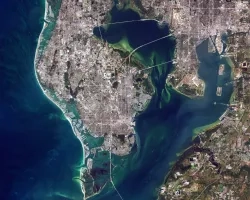How a NASA ARSET training inspired air quality innovation in India
In late 2015, Amrit Sharma packed up his home in Minneapolis, Minnesota and made the big move to New Delhi, India. Shortly after his arrival, the reality of India's pollution situation came as a shock, "I discovered that millions of people die from air pollution," Sharma said, "and I was in the heart of a city where it is extremely hazardous almost every day of the year." Most of the pollution in New Delhi is caused by road dust and industry, but another major contributor is exhaust from all the cars and buses.
It's called the Emoji Air Pollution Map. Emojis are cartoon images, like a smiley face or a frowny face, and they're commonly used online to express emotions. Sharma also created a multilingual chatbot named Smokey, and an online newsletter featuring stories about air pollution around the globe. But how did someone without a scientific background end up creating an interactive map that incorporates NASA satellite data? He had to learn somehow, and luckily for Sharma, the Earth Applied Sciences Capacity Building program area could help with their Applied Remote Sensing Training Program (ARSET). Not only did ARSET make Sharma's that dream possible, it did it free of charge.
Sharma attended an in-person, three-day air quality ARSET training in Pune, India in May 2017, where he learned all about how to access data from NASA's Terra and Aqua satellites, as well as the Suomi National Polar-orbiting Partnership (Suomi NPP) satellite. It showed him what can be done to address air quality issues like those in New Delhi through the use of remote sensing.
"The emoji air pollution map is where I use the data. It empowered me to do this. If it wasn't for the Pune program I wouldn't have considered this because it wouldn't have been on my mind. The Pune training was hands on. We had exercises we did every day," Sharma said. "And that allowed me to work on it when I actually needed to do it."
According to Sharma, this wasn't the only benefit, though.
"My biggest takeaway from the Pune training was the community. There were a lot of people who work on air pollution issues in India, but I would never have heard of them. The workshop was an opportunity for me to connect and collaborate with them," he said.
It has been three years since Sharma attended the ARSET workshop in Pune, but his organization, AirAirAir, is stronger than ever.
"Since the Pune workshop I have stayed in touch and met with three people in New Delhi and I am still in touch with many of the others through email."
As seen in Sharma's case, some of the biggest impacts of the ARSET program comes not from the information itself, but from its ability to connect those involved in and interested in remote sensing that would probably have never met otherwise.
You may have your own mission that might involve NASA satellite data. You might also not have any prior experience with remote sensing. If that is the case, take a page from Sharma's book and do not be discouraged. Even if you cannot attend an in-person ARSET training, all of the program's training sessions are recorded and can be found on the ARSET website and on YouTube. There is also an interactive training (Fundamentals of Remote Sensing) that we suggest you start with if you are new to remote sensing.
